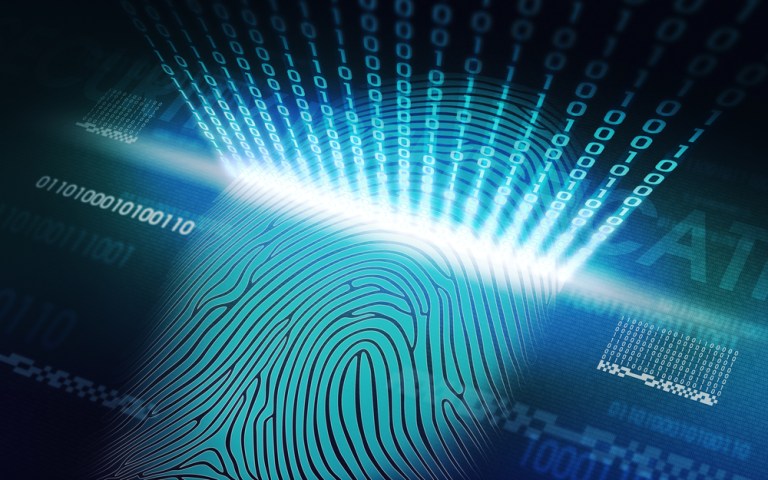
What’s an identity if it can’t be verified — or trusted? Sarah Clark, GM of identity for Mitek, shared why 2016 was the year payments wasn’t all about mobile, biometrics and establishing trust, but how all of those things converged to spark a digital identity revolution.
PYMNTS consulted 21 payments executives from across the industry to share their insights on the biggest takeaways from 2016 as part of the “Payments 2016, The Year Of…” eBook. We posed the same question to each executive:
If you had to answer the question, Payments was the year of …, how would you answer, and how does your answer change your world — and the world of payments, more broadly?
Here is the response from Sarah Clark, general manager, identity, Mitek…
Payments 2016: The Year Mobile, Biometrics And Trust Converged
As payments continue their digital and mobile transformation, 2016 became the year that new methods of identity verification and authentication in the mobile channel became critical to success.
Consumers are asking for more mobile payment options. A recent report by NTT DATA suggests that a third of consumers expect mobile money to dominate within a decade, with the U.S. and Europe leading the charge. Likewise, a recent report by Ovum predicted that the total global transaction value generated by P2P mobile money transfers will increase to $300 billion in the next three years, driven by 1.6 billion end users making domestic as well as international P2P payments.
This increased appetite for mobile payments and mobile remittances on a global scale is a big incentive for payments companies and financial institutions to implement secure and mobile-optimized identity verification processes that keep valuable mobile customers engaged; are inclusive of key demographics driving this mobile explosion such as millennials, the unbanked and those new to the U.S.; and also meet the growing ID verification requirements under ant-money laundering (AML) regulations.
Data breaches continue to rapidly multiply; by just the first half of 2016, we saw 974 reported worldwide breaches, when over a half billion records were already known to have been compromised. As a result, authentication and identity verification practices that rely on data only, such as passwords and knowledge-based authentication questions, have been scrutinized and are largely seen as no longer sufficient. Close to 75 percent of companies surveyed are planning to move away from relying on passwords for this very reason.
In response, financial services providers have ramped up their efforts to satisfy the increasing demand for more convenience and speed of mobile-first users in a way that seamlessly mitigates risk and creates trust. With this in mind, financial institutions have invested heavily in biometric authentication user experiences.
Biometrics is not new territory for the financial industry; it has been in exploration for years to reach widespread acceptance in 2016. The global rollout of Mastercard’s “Selfie Pay” and Visa’s multifactor biometric authentication experience are a great example of this need to make payments faster and more convenient for consumers and still safer for financial services providers.
Biometrics are perceived by both consumers and financial institutions as an ideal enabler for validating mobile transactions, especially when compared to more traditional options such as passwords. Based on the proliferation of mobile devices and the convenience these offer, Goode Intelligence predicts 1 billion customers will use biometrics to access banking services by 2017. Furthermore, the accelerated rollout of biometric-enabled banking will virtually make biometrics accessible to anyone with a smartphone.
Reached this point, it’s worth recalling that an often overlooked key to facilitating secure biometric authentication is enabling a strong identity verification process.
It’s critical for financial institutions to offer a simple and effective user experience that enables the association of the face or other biometric traits used for biometric authentication with the authorized individual, more so when trusting the immediacy of the mobile channel. Allowing end users to complete that biometric association step in seconds is possible when using technology such as Mitek Mobile Verify, which leverages the camera on the consumer’s smartphone to scan their photo ID and combine the data extracted with some form of biometrics, providing an authentic and verified digital identity that can be used for ongoing authentication. This shifts the paradigm of both identity verification and authentication away from the old reliance on “what you know” factors to a more secure future of “what you have” and “who you are” factors.
Taking into account that the number of mobile banking users globally is forecast to double to 1.8 billion over the next four years, representing over 25 percent of the world’s population, and despite high uncertainty on how the biometric market will evolve in the next few years, expectations are encouraging. For example, at Mitek, we have seen how banks that have incorporated biometric-based authentication into their mobile payment process are already enjoying increased approval rates, improved cardholder loyalty and a stronger fraud protection.
Over the last 12 months, financial institutions and payments companies have improved security, expanded their mobile offerings and rolled out digital commerce capabilities that will spur changes in consumer payment behaviors, giving way to more engaging and secure user journeys and better means of ongoing biometric authentication.
Getting into 2017 and considering how consumers become more aware of the need to safeguard their personal data without sacrificing convenience, we anticipate to see a greater deal of identity verification solutions that combine the latest advancements in deep learning and artificial intelligence to provide more trust in the digital space.
Additionally, the adoption of biometrics will make the whole identity verification process faster and more secure, adding a second factor of authentication and making it easier for banks and financial institutions to comply with current and upcoming KYC and AML regulations.
. . . . . . . . . . . . . .